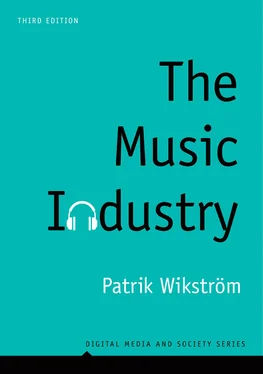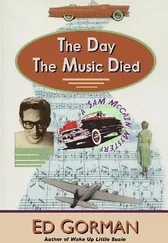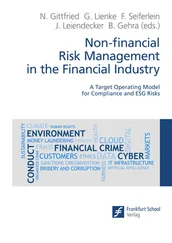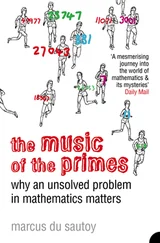
Figure 0.2Increased connectivity causes the music firms to lose their ability to control the flow of information
It is important to note that ‘control’ in this context is to be understood as the music firms’ ability to limit, direct or constrain the flow of information. ‘Loss of control’ should not be understood as losing the ability to monitor, observe or detect the flow of information. Rather, digital information and communication technologies have increased music firms’ ability to monitor and follow fans’ online behaviour, how they use information and communicate with each other.
In the twentieth-century music economy, the content (music) and the medium (disc) were inseparable, and the music industry clearly was an industry made up of physical goods. In the new music economy, characterized by high connectivity and little control, it becomes increasingly difficult to charge a premium for discrete chunks of information. As soon as some kind of information is uploaded to the Cloud, it is instantly universally accessible to everyone connected to the Cloud. In such a ‘friction-free network’, 3the economic value of providing basic access to an individual track is infinitesimally close to zero.
But there are other things that remain chargeable. In a world where information is abundant, people may not be willing to pay a premium for basic access to that information, but they are most probably willing to pay for services which help them navigate through the vast amounts of information. If music is thought of as a service, it is possible to fathom consumer propositions that are both valuable to the audience and respectful to the work of the creative artists.
The role of the creative artist is the most respected and admired in the music industrial ecosystem. Lady Gaga, Adele, Ed Sheeran, Beyoncé Knowles, Kendrick Lamar: all are powerful brands that appeal to millions of fans all over the world. I praise these extraordinarily talented individuals and recognize their work as the music industry’s centre of gravity. However, in the new music economy, the relationship between these brands, their art and the audience has changed. The increased connectivity of the audience network combined with various kinds of music production tools enable ‘non-professionals’ to create, remix and publish content online. This does not necessarily imply that, in the new music economy, every music listener is also an amateur musician, but nevertheless a considerable share of the audience does create and upload content to the Cloud. Research on user behaviours in other cultural sectors shows for instance that approximately five per cent of all fan fiction users create and upload content, 12 per cent comment on that content and 24 per cent actively read the content and the comments (Olin-Scheller and Wikström 2009). Studies of users of online discussion boards confirm these findings and show similar ratios between different types of user behaviours (Horowitz 2006). It is not entirely unrealistic to assume that those fans who engage with their idols; and create, remix and upload content are also the most dedicated and loyal. It is also quite likely that they are the ones who spend the most on concerts, merchandise, etc. Based on those two assumptions, it makes sense for music firms to secure a good relationship with this section of the audience, encourage their creative desires and do their best not to push them away.
To sum up: the new music industry dynamics is characterized by high connectivity and little control; music provided as a service; and increased amateur creativity. The driver of all these changes is primarily the development of digital information and communication technologies. The music industry started its journey into the ‘digital age’ a long time ago, during the 1970s, when digital technologies were introduced in the areas of music production and recording. During the 1980s, primarily due to the introduction of the compact disc, the use of these technologies expanded to music distribution. Lastly, during the late 1990s and into the 2000s and 2010s, Internet technologies became the most important drivers of change, and ultimately brought every remaining part of the music business, including promotion and talent development, into the realm of ‘the digital’.
The number of technological innovations related to this third period of change has literally exploded: Bandcamp, Amie Street, iTunes, YouTube, SpiralFrog, Qtrax, SoundCloud, last. fm, LimeWire, MySpace, Guvera, MOG, Rhapsody, Pandora, Spotify, Shazam, WiMP, QQ Music, rdio, are only a few out of an overwhelming number of music technology brands that have been part of this disruptive era for a brief, or in some cases an extended period of time. Although many of these initiatives may be relevant as markers of the new music industry dynamics, this book does not analyse the details of any such specific venture, technology or innovation. My ambition is rather to stay above the level of these ‘technological ripples’ and try to discern the long-term patterns that are created by the innovations in aggregate.
During this period of change I have been able to meet a large number of music industry professionals and to discuss with them their understanding of the new dynamics. I use quotes from these interviews to illustrate and strengthen the reasoning. In order to ensure the anonymity of the informants, I conceal their identities in relation to their quotes and introduce them by their profession – for example ‘product manager’ or ‘producer’. I conducted interviews with professionals from the US, the UK, Australia, China, Norway and Sweden. Why these countries, one might ask? The Anglophone countries warrant the attention of this study since they constitute some of the largest and most influential national music markets in the world (IFPI 2018), in terms of both consumption and production. Norway and Sweden are relatively small music markets, but they have been bellwethers for other countries in the transformation of their music economies. Norway and Sweden are countries with advanced information technology infrastructures and copyright legislations that initially were slow to adapt to international treaties (Keller 2006). This technological-regulatory combination nurtured an environment that at one point established Sweden as ‘a haven for copyright infringement’ (BBC News 2006; Reuters 2006) but that also allowed the Swedish capital Stockholm to serve as the seedbed for both Spotify and SoundCloud – two online music platforms that have had a profound impact on the shaping of the digital music economy of the twenty-first century. Sweden is also a nation with a ‘fantastically rich music culture’ (BBC News 2006) and a history as a strong exporter of popular music (see, e.g., ExMS 2005). It is one of only three countries in the world that are net exporters of music and is the world’s biggest music exporter measured in terms of exports per capita (ibid.). Lastly, China is among the most dynamic of all national music markets, primarily due to a number of key government policy initiatives that enabled the establishment of a formal economy based on recorded music (Osawa 2015). In early 2019, the growth of the Chinese music economy was expected to continue and firmly establish China as one of the ten largest music markets in the world.
While I recognize the idiosyncratic nature of these and other national music markets, most mature music markets are still dominated by the same small set of large multinational organizations. These international economic structures allow innovations, practices, people and routines to flow easily across national borders. For that reason, I argue that the findings presented in this volume based on research in the aforementioned countries are transferable to other music markets, at least to those mature music markets in countries that are members of the OECD.
Читать дальше













